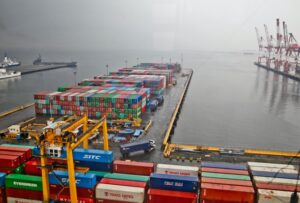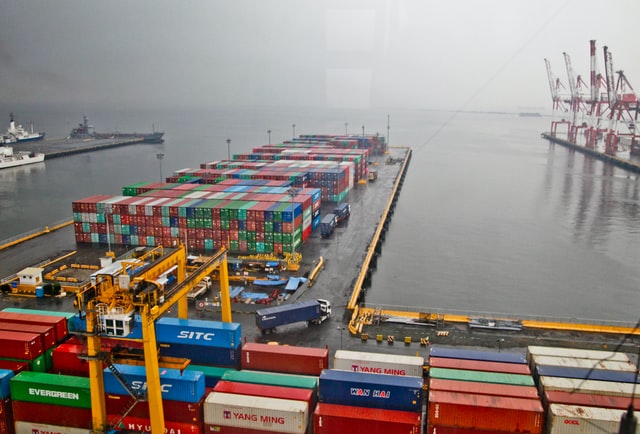Supply and Demand, during Pandemic

In March 2020, the World Health Organization declared the pandemic caused by Covid 19, forcing people to change their priorities. Trips to the restaurants, vacations to exotic places, watching movies in the big screen took a back seat. They redirected their money and whatever else they earned working from home to renovating their dwellings to double as an office and classroom, purchasing newer laptops and newer models of mobiles, putting new printers in their bedrooms to make for more efficient work output at home, getting gym equipment for fitness because gyms were closed, and furnishing their kitchens with mixers, blenders and juice extractors to make their lives livable during a pandemic. They alternated their meals from being prepared in their kitchen to ordering from restaurants, delivered by any one of the following: Uber Eats, Grab, Skip the Dishes, Foodora, Door Dash, to name a few. Lifestyles changed.
Until the arrival of the vaccines, people generally were hesitant to leave the safety of their homes for fear of getting infected. The year 2021 ushered in hope with the arrival of vaccines. Despite the intermittent lockdowns around the world, depending on the Covid stage the city or country was on, people started to return to some semblance of normalcy. Among the items which were always in their purses/pockets – house and car keys, debit or credit cards – with their mask which is required to enter supermarkets and drugstores. Whatever their stand is on this virus and its vaccines, they had to comply with the mask requirement indoors; otherwise, the consequence is no shopping for food, toiletries and medicine. However, a new problem has erupted with this pandemic, one that has to do with the supply chain.
Peter S. Goodman, in his New York Times article dated October 25, 2021, discusses the pathway of the global chain supply which hardly got any focus before the pandemic. Then, so long as the store had what we needed, it didn’t dawn on us where they came from or how they even got to the store. Now, we’re finding out about containers being stuck in big US ports, namely, the LA, NYC and Savannah, Georgia and the repercussion of these in our budget. Container ships have been dropping off their cargo in big ocean ports which, at the moment, are grasping for solutions to get them off the premises to make room for future arrivals.
When we buy products, we automatically look for the “Made in ….”. What this means is that the assembly of the product was made in that country from parts coming from other countries. COVID 19 infected workers in factories, in the docks where the containers are dropped off, even in the supermarkets where we shop for food. Because everyone, except for essential workers, was working and studying from home, demand for products increased and countries like China tried their best to provide except, now, China didn’t have enough containers. During the first months of the pandemic, China shipped PPEs (personal protection equipment) to countries in West Africa and South Asia which basically do not trade that much with China and are now stuck with empty containers. On the other hand, China kept producing items for North America and Europe but are now short of containers. Meanwhile, the containers that arrived in North America could not be unloaded because of shortage of workers. Dockworkers and truck drivers were in quarantine. The situation became dire after the Suez Canal was shut down for six days because a mega sized ship got stuck in it. Electronics became scarce. I remember a relative wanting to get a newer model of his Apple laptop early this year but could not find any in Manila. It was simply out of stock. He had been working from home and was in need of a better working laptop yet could not find any at the time. When you think of it, Manila is a mere 3,101 kms from China yet there was no Apple laptop in the Philippine capital.
In her article at Financial Post dated September 24, 2021, Bianca Bharti touched on the backlog of containers in ocean ports and its effect on prices in Canada. Currently, the container capacity at the Port of Vancouver is at 85%. A spokesperson for the port said that unlike the 70-ship backlog at the LA port, the Vancouver port has limited congestion and one-ship anchor as of the date of the article. However, he added “our terminals are operating at a very high level which creates a risk of congestion as a result of supply chain disruptions”.
This brings me back on what to expect this coming winter, apart from snow and frigid weather. Most certainly, we’ll be paying more for our goods ie, toothpaste, toilet paper, running shoes, etc. But, at least, we now have the vaccine so if you ask me, I feel much better approaching 2021 winter than I was in the fall of 2020 when everything seemed bleak because of this virus. The pandemic is hard enough and yet, there are those who are non believer on pandemic and put up such protest that paralyzed city of Ottawa, Toronto and other Canadian city with convoy of truckers protest.
Photo by Jerome Monta on Unsplash



